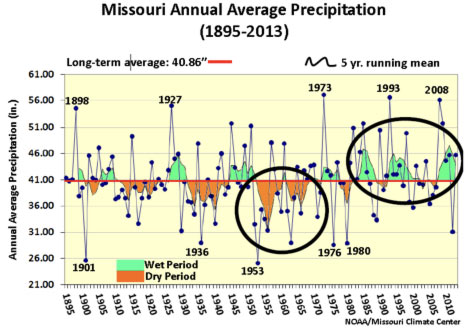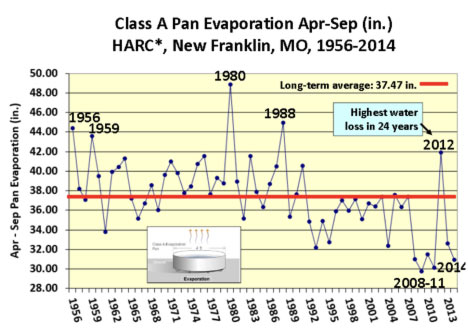The East Locust Creek Water Supply Reservoir was sized and sited to address the most acute and chronic regional water shortage in the State of Missouri. Because of the geology, topography and climate of the 10 county region around and including Sullivan County, Missouri, there is a distinct shortage of available raw water. Without ready access to suitable streams and the lack of an adequate fresh water aquifer (underlying deep well water is brackish), the area has lived under the threat of drought for decades, leaving only a regional surface water impoundment as the only viable cost effective option for water supply to the 10 county service area.
As far back as the year 2000, a letter report from the Missouri State Climatologist indicated the clear need for a regional source of water to satisfy the current and long-term needs for water in the NCMRWC service area.
The 2002 Missouri Drought Plan shows the entire 10 county region, except for small areas along the Missouri River as highly susceptible to drought. Further, it lists the NCMRWC’s current main water supply, Elmwood Reservoir, as a prime example of a drought susceptible water supply.
More recently, the 2016 Northcentral Missouri Regional Water Source Evaluation Study found that if a drought similar to the drought of the 1950s were to occur again in the near future, the 10 county region would experience a shortage of water of around 9 million gallons per day. The Source Water Evaluation focused on the drought of the 1950s because it is the design drought for the reservoir and the worst drought for which we have detailed data to base a reservoir design on. However, a recent tree ring based study of droughts indicates that thirteen droughts lasting at least 10 years have occurred in the last 1000 years.
Finally, a PowerPoint presentation made by Pat Guinan, from the Missouri Climate Center, at the 2014 Governor’s Conference on Natural Resources included the following two slides, which show that Missouri has seen above average precipitation since 1983 and below average evaporation since 1992. However, the drought events which have garnered the current level of overwhelming support occurred in the years 2000, 2003, 2011 and 2012. Even during these recent short duration droughts, it became necessary to implement emergency measures such as adding a water line to pump water from Trenton (35 Miles away) and adding a raw water intake in Locust Creek 3.1 miles away. During an extended drought, it is unlikely that either of these emergency sources will remain viable. As Mr. Guinan points out in his summary slide “The 2012 drought resulted in numerous impacts, affecting many sectors in Missouri. However, it was a young drought when compared to other historic droughts, i.e. 1952-56. An important question we all need to consider is how prepared are we when the next 1950’s drought affects the Show Me State?”



